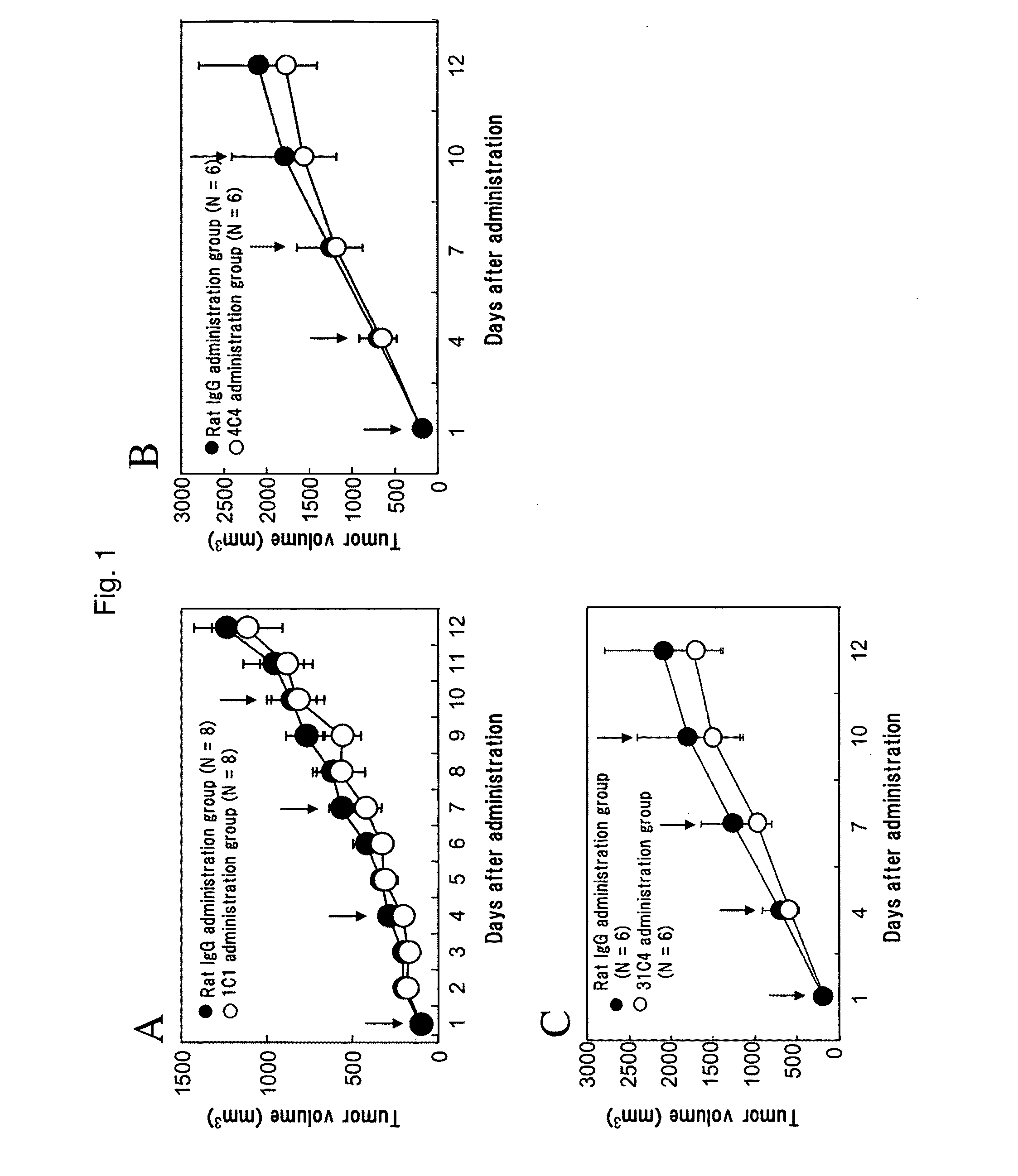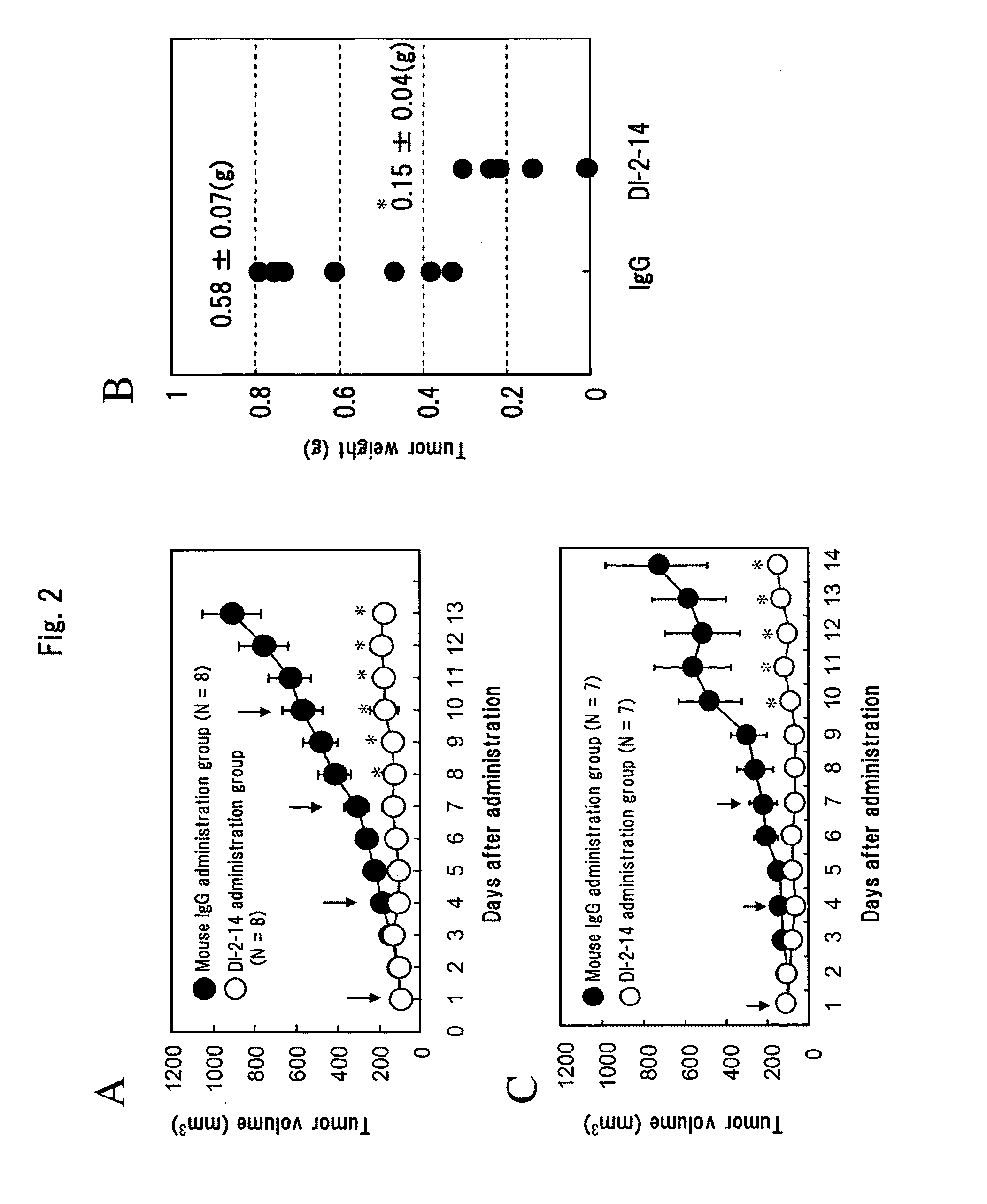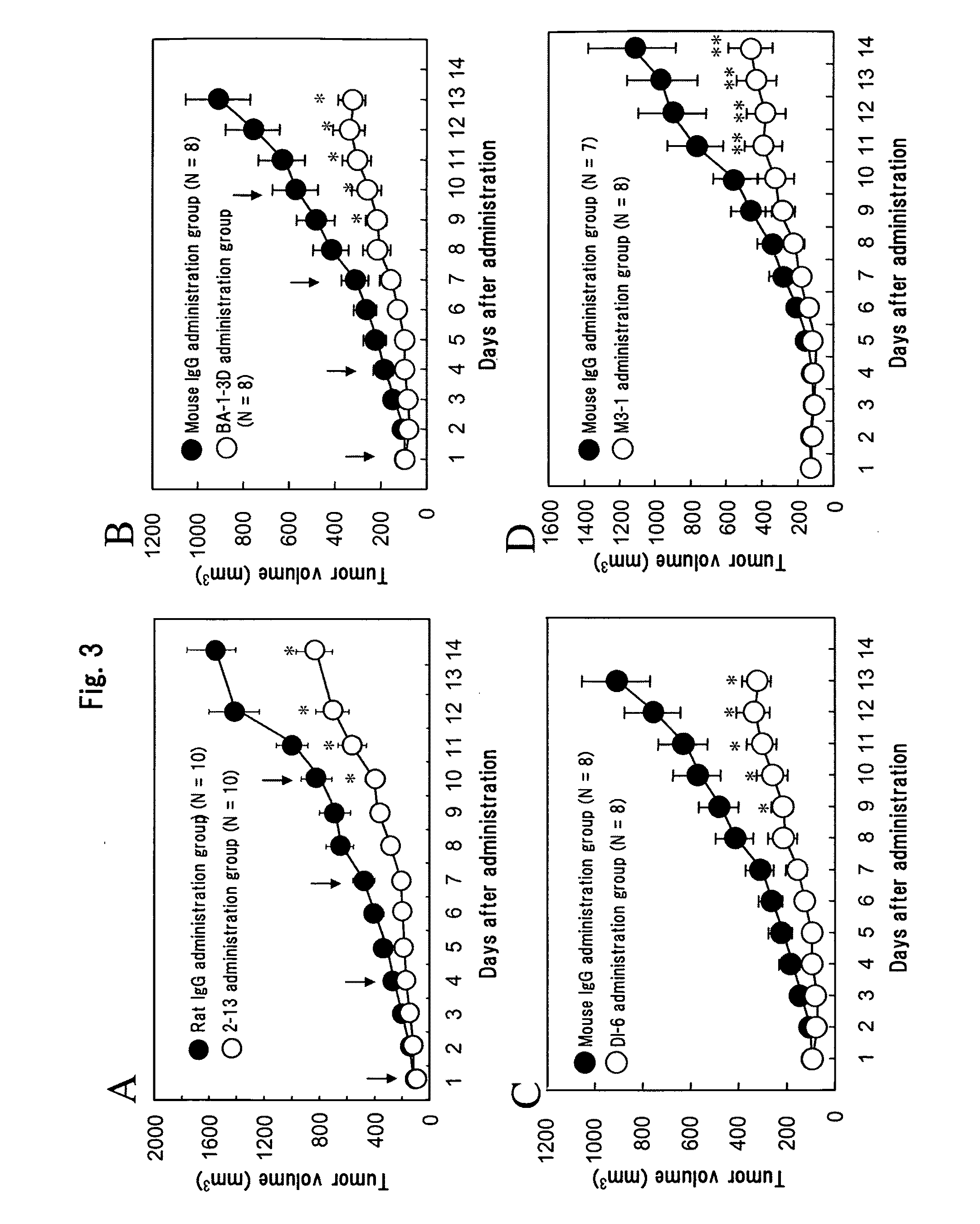Anti-hdlk-1 antibody having an antitumor activity in vivo
a technology of anti-tumor activity and antibody, which is applied in the field of anti-hdlk1 antibodies having can solve the problems of substantially impossible to efficiently produce antibodies, difficult to prepare and obtain antibodies exhibiting anti-tumor activity in vivo,
- Summary
- Abstract
- Description
- Claims
- Application Information
AI Technical Summary
Benefits of technology
Problems solved by technology
Method used
Image
Examples
example 1
1. Cell Lines
[0230]HEK-293-hDlk-1, 7E2-C-hDlk-1 and Huh-7-hDlk-1 cell lines were produced in accordance with the descriptions of WO 2005 / 052156 and they were used. Moreover, human neuroblastoma SK-N-F1 cells were obtained from the American Type Culture Collection (ATCC; catalog No. CRL2142).
[0231]SW480-hDlk-1 cells were obtained by introducing an expression vector, pcDNA-hdlk-Flag (please refer to WO 2005 / 052156) that contained a full-length hDlk-1 gene, into a human colon cancer-derived cell line, SW480 (obtained from the Laboratory of Cell Growth and Differentiation, Institute of Molecular and Cellular Biosciences, University of Tokyo), then selecting cells using an antibiotic G418 (geneticin, GIBCO BRL) and then establishing a cell line that stably expressed hDlk-1.
2. Preparation of Anti-hDlk-1 Polyclonal Antibody
[0232]In order to construct an hDlk-1 extracellular region (FA-1) expression vector, the following primers were designed and synthesized.
Forward (F) primer:5′-cgcgtccgca...
example 2
[0323]1. Dose-Dependent Anti-Tumor Activity of Mouse Anti-hDlk-1 Antibody (Clone DI-2-14) in hDlk-1-Expressing Liver Cancer Cell Line (Huh-7-Dlk-1 Cells) Xenograft Treatment Models
[0324]As described in Example 1, the clone DI-2-14 (mouse IgG1) that is an anti-hDlk-1 monoclonal antibody exhibited an extremely high anti-tumor activity, at a dose of 20 mg / kg body weight, in the human liver cancer cell line (Huh-7-hDlk-1 cells) Xenograft Treatment models. Thus, in order to further examine the anti-tumor activity of the clone DI-2-14, dose-dependent anti-tumor activity was evaluated.
[0325]Anti-tumor activity was evaluated in the same manner as that described in Example 1, except for the dose of the antibody was changed.
[0326]As shown in FIG. 19, the growth of tumor was dose-dependently inhibited by administration of the clone DI-2-14. On the 8th day (Day 8) after administration of the antibody, the tumor volume was found to be 522.76±107.9 mm3 in the DI-2-14 (1 mg / kg) administration grou...
example 3
[0400]Angiogenesis-inhibiting effect of DI-2-14 antibody (mouse anti-hDlk-1 monoclonal antibody, clone DI-2-14) in vivo
(1) Immunohistostaining
[0401]Using Huh-7-hDlk-1 cell cancer-bearing mice, cancer tissues were excised from each of a mouse IgG administration group (a control group: 2 mice) and a DI-2-14 administration group (4 mice). The cancer tissues were embedded into an O.C.T compound (Tissue-Tek) and a fresh frozen section (7 μm) was prepared. The section was fixed at room temperature with 2.5% glutaraldehyde / PBS for 15 minutes and then with 0.5% Triton X-100 / PBS for 3 minutes. It was then washed with PBS at room temperature for 5 minutes 3 times. Subsequently, the section was treated at room temperature for 5 minutes using a solution produced by adding a hydrogen peroxide solution to methanol to a final concentration of 0.3%, so as to remove endogenous peroxidase activity. Thereafter, the slide was washed with PBS, 0.1% Tween / PBS and 0.02% Tween / PBS in this order, at room te...
PUM
| Property | Measurement | Unit |
|---|---|---|
| Volume | aaaaa | aaaaa |
| Volume | aaaaa | aaaaa |
| Volume | aaaaa | aaaaa |
Abstract
Description
Claims
Application Information
 Login to View More
Login to View More - R&D
- Intellectual Property
- Life Sciences
- Materials
- Tech Scout
- Unparalleled Data Quality
- Higher Quality Content
- 60% Fewer Hallucinations
Browse by: Latest US Patents, China's latest patents, Technical Efficacy Thesaurus, Application Domain, Technology Topic, Popular Technical Reports.
© 2025 PatSnap. All rights reserved.Legal|Privacy policy|Modern Slavery Act Transparency Statement|Sitemap|About US| Contact US: help@patsnap.com



